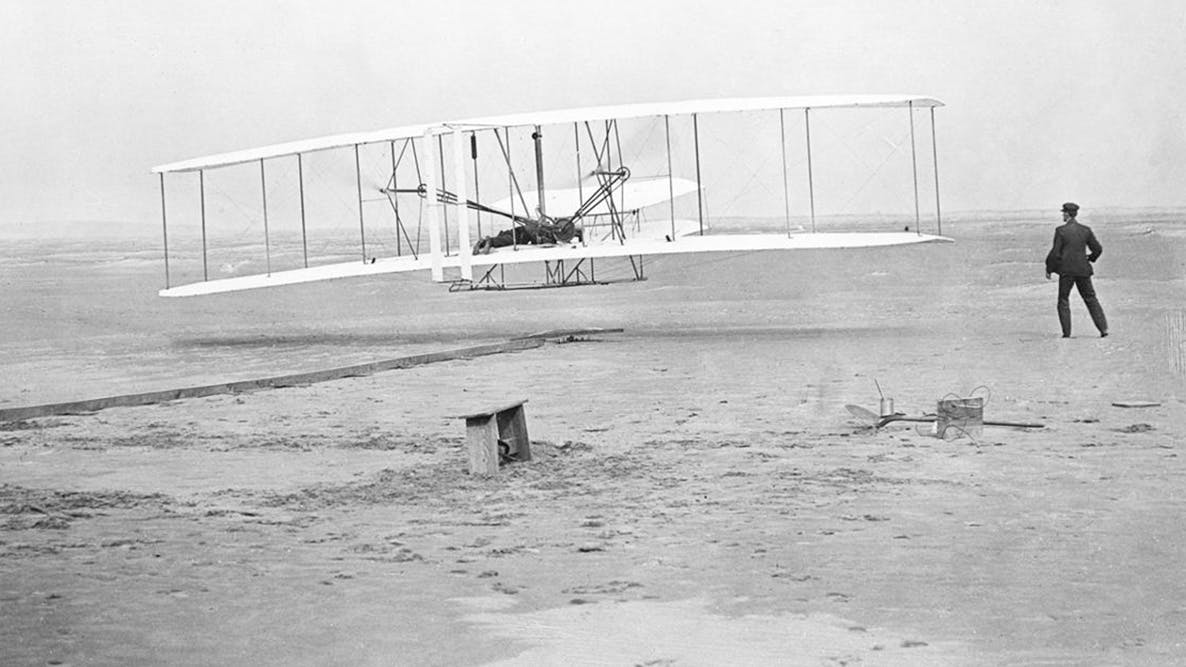Were the Wright Brothers Wrong?
For many entrepreneurs and inventors, focusing on patent protection may obscure the need to keep improving your product.
Were the Wright Brothers Wrong?
Many of our clients, from startups to multi-national medical device manufacturers, pursue patents on the products and services we help them design.
While every patent applied for by our clients is solely assigned to them, many of our team members get the thrill of being listed as inventors (an inventor is “the person, or persons in United States patent law, who contribute to the claims of a patentable invention”). It is thrilling to see your name on a patent and really does create a historical record of your career as a product developer.
But my one-sided, ego-driven view of patent protection has morphed over the last couple of years when I had to consider what level of protection was practical for a product I was selling. There were a couple key characteristics of the product:
- It was easy to copy both domestically and internationally.
- It was trendy and may not have much market value in three or so years.
These characteristics were at odds with each other. The first characteristic would suggest needing strong copyright and patent protection. In this case, the copyright was difficult to get and any simple changes to the product made it possible to get around the copyright. A design patent would be similarly weak. A utility patent was possible and we considered it seriously and in the end determined that it would be a waste of time and money for a few reasons:
- The likelihood of getting a utility patent was low as we would have a hard time proving our claims were “non-obvious.”
- If we did succeed, it may take three years to have the patent issued. At that point, the market may not exist and anyone that did infringe would already have made their money. Obviously, we had the option to wait to sell our idea until the patent was issued, but at that point, there probably would be no money to be made.
- We didn’t have the stomach or the resources to aggressively defend the patent.
So we decided our best approach was to design the best product we could, market it aggressively and do our best to beat the copycats in the market.
This experience led me to the following conclusions about patent protection (please comment below and tell me where my logic is flawed … I am not a patent lawyer, after all):
- If your product or company lacks one or more of the following, don’t bother getting a patent:
- The means to aggressively defend your patent against infringers.
- Staying power, long enough to last pass the years it may take in the patent office.
- An exit strategy to sell to a big company that will value the intellectual property highly.
- While patents are designed to encourage innovation by providing a window of time that you will own the market, this protection is best suited for big breakthroughs made by big companies.
- Products without a significant barrier to entry (hard to manufacture, significant regulatory hurdles, expensive to acquire customers) are suffering in the current market, regardless of intellectual property. Marketplaces like Etsy, Amazon and Alibaba are for competition like water is for gremlins. Shutting them all down requires a whole division of people.
Which leads me to an interesting historical reference that I stumbled upon when the book “Birdmen” by Lawrence Goldstone showed up in my Little Free Library. Until reading “Birdmen,” the only thing I knew about the Wright Brothers was that they “invented” heavier-than-air flight. As with every story, this headline hides so many critical details.
First, the Wright Brothers were in a race to figure out powered flight. Wilbur was relentless and paired an inherently unstable plane with an ingenious way to control roll by warping / twisting the wings. This created the first steerable airplane and with Orville’s piloting skills led to that first successful flight at Kitty Hawk.
Second, Wilbur aggressively pursued a patent to cover their roll control based on “lateral control” of the outer wings. In a couple of courts, the patent was granted and the Wright Brothers spent the next 10 or so years aggressively fighting every other airplane designer for licensing fees regardless of the design of the competing wing controls.
Millionaire investors like Cornelius Vanderbilt invested in the Wright Brothers focused almost all of their efforts on patent protection and almost no time working on improving their airplanes. In the end, this approach didn’t work out very well as other designers and manufacturers moved the field forward despite the threat of lawsuits from the brothers. Mail order catalogs started selling parts, tools and plans for airplanes and at one point in 1911 about two-thirds of the 800 airplanes made were one-off designs. It was the Etsy of their day.
So it turns out that certain aspects of patent protection have been the same for a long time – it favors well-capitalized groups (like the Wright Brothers’ investors), it favors technologies with staying power (like heavier-than-air flight), and you shouldn’t put all of your eggs in the patent protection basket. You need to win in the market, not just the courtroom.
